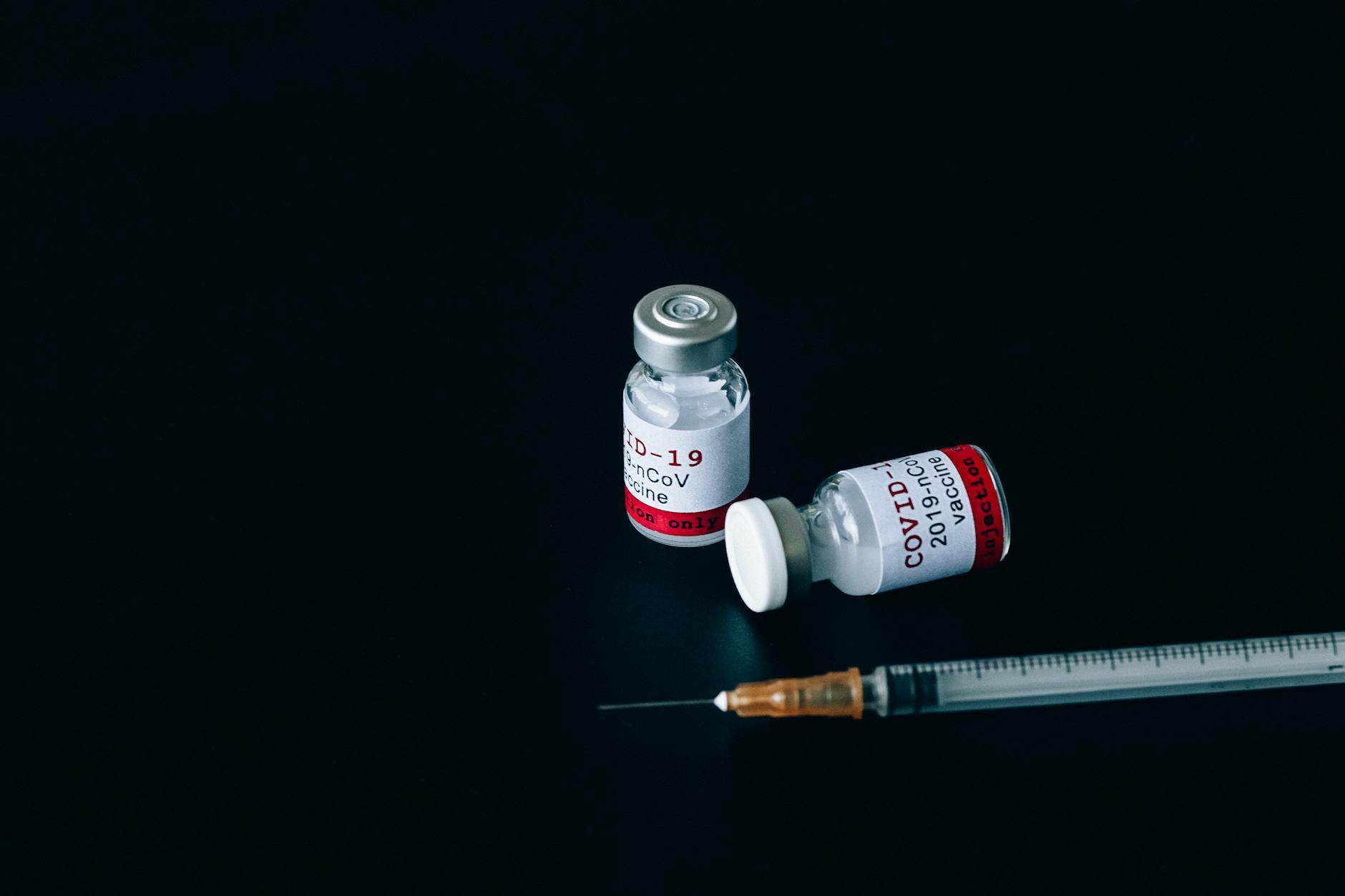
🚨 Did you know that MPOX cases have surged globally, affecting thousands of lives across communities? As this viral infection continues to make headlines, many are left wondering about their protection options. The good news? There’s a powerful shield available – the MPOX vaccine.
Whether you’re concerned about your risk factors or simply want to stay informed, understanding your vaccination options is crucial for personal safety. From the different types of vaccines available to the step-by-step vaccination process, we’ve got you covered with everything you need to know about this vital preventive measure.
In this comprehensive guide, we’ll walk you through the essential aspects of MPOX vaccination – from basic understanding to practical access information. Let’s explore how you can protect yourself and your loved ones with the latest scientific advancements in MPOX prevention. 💪

Understanding MPOX Vaccine and Vaccination Basics
What MPOX is and How it Spreads
MPOX (formerly known as monkeypox) is a viral infection that belongs to the same family as smallpox. The virus primarily spreads through:
- Close skin-to-skin contact with infected individuals
- Contact with contaminated materials (clothing, bedding)
- Respiratory droplets during prolonged face-to-face contact
- Direct contact with rash, scabs, or body fluids
The infection typically presents with these characteristic symptoms:
- Fever and flu-like symptoms
- Swollen lymph nodes
- Distinctive rash that progresses through stages
- Lesions that can be painful or itchy
Why Vaccination Matters Now
The importance of MPOX vaccination has increased significantly due to several factors:
| Factor | Impact |
|---|---|
| Global Outbreaks | Recent widespread cases outside endemic regions |
| Prevention Effectiveness | Up to 85% effectiveness in preventing infection |
| Reduced Transmission | Decreased community spread through immunization |
| Healthcare Burden | Lower strain on medical resources |
The current public health focus on MPOX vaccination stems from:
- Increased global mobility facilitating disease spread
- Evolution of virus transmission patterns
- Better understanding of prevention strategies
- Growing awareness of at-risk populations
Target Groups for Vaccination
Priority groups for MPOX vaccination include:
- High-Risk Individuals:
- Men who have sex with men (MSM)
- Transgender or nonbinary persons
- Sex workers
- Healthcare workers treating MPOX patients
- Exposure-Based Categories:
- Known close contacts of MPOX cases
- Laboratory workers handling MPOX specimens
- First responders with potential exposure risk
- Preventive Categories:
- Individuals planning travel to endemic regions
- Those with multiple sexual partners
- People living in areas with active outbreaks
Vaccination eligibility criteria may vary by location and current public health guidelines. Key considerations for prioritization include:
| Risk Level | Description | Vaccination Priority |
|---|---|---|
| Very High | Direct exposure or confirmed contact | Immediate |
| High | Occupational risk or vulnerable group | Priority |
| Moderate | Potential exposure risk | As available |
| Low | General population | Not currently prioritized |
Understanding these basics is crucial for effective prevention. Healthcare providers assess individual risk factors and exposure history to determine vaccination appropriateness. They consider:
- Previous exposure history
- Occupation and lifestyle factors
- Current health status
- Local outbreak conditions
- Vaccine availability
The vaccination strategy focuses on both pre-exposure prophylaxis (PrEP) and post-exposure prophylaxis (PEP), with timing being crucial for maximum effectiveness. Healthcare providers recommend:
- Pre-exposure vaccination for:
- High-risk individuals
- Healthcare workers
- Laboratory personnel
- Post-exposure vaccination for:
- Close contacts of confirmed cases
- Individuals with known exposure
- Those in outbreak settings
Now that we’ve established a solid understanding of MPOX and its vaccination fundamentals, let’s explore the specific types of vaccines available for protection against this viral infection.

Types of MPOX Vaccine Available
JYNNEOS Vaccine Features
JYNNEOS (also known as Imvamune or Imvanex) is a modern, non-replicating live vaccine specifically designed for preventing MPOX and smallpox infections. This vaccine stands out for several key features:
- FDA-approved for adults 18 years and older
- Administered in two doses, 28 days apart
- Contains modified vaccinia Ankara virus
- Suitable for immunocompromised individuals
- Storage requirements: -20°C (-4°F)
ACAM2000 Vaccine Characteristics
ACAM2000 represents an older generation of vaccines originally developed for smallpox prevention but also effective against MPOX. Key characteristics include:
- Live vaccinia virus that replicates
- Single-dose administration
- Requires specialized administration technique
- Creates a characteristic skin reaction (“take”)
- Storage conditions: 2-8°C (36-46°F)
Comparing Vaccine Effectiveness
Below is a detailed comparison of both vaccines’ key attributes:
| Feature | JYNNEOS | ACAM2000 |
|---|---|---|
| Efficacy Rate | 85% against MPOX | 85-95% against MPOX |
| Immunity Timeline | 14 days after second dose | 28 days after single dose |
| Side Effects | Mild, minimal risk | Moderate to severe possible |
| Administration Method | Subcutaneous injection | Bifurcated needle scarification |
| Contraindications | Few | Multiple |
| Pregnancy Safety | Considered safer | Not recommended |
Global Availability Status
Current global distribution of MPOX vaccines varies significantly by region and country:
North America:
- United States: Both JYNNEOS and ACAM2000 available
- Canada: Primary access to JYNNEOS
- Mexico: Limited availability
Europe:
- EU countries: JYNNEOS (marketed as Imvanex)
- UK: Consistent supply of modified vaccinia Ankara
- Eastern Europe: Variable availability
Asia-Pacific:
- Australia: Strategic reserve of both vaccines
- Japan: Limited JYNNEOS supply
- Southeast Asia: Restricted access
Africa:
- Limited availability in most countries
- WHO initiatives for increased distribution
- Focus on high-risk areas
The distribution strategy prioritizes:
- High-risk population groups
- Healthcare workers
- Laboratory personnel
- Close contacts of confirmed cases
Key factors affecting global availability include:
- Manufacturing capacity
- Cold chain requirements
- International shipping logistics
- Local regulatory approvals
- Cost considerations
Despite increasing production efforts, vaccine supplies remain limited in many regions. International health organizations continue working to improve global access, particularly in areas with active MPOX outbreaks. Countries with domestic manufacturing capabilities typically maintain better access to vaccines for their populations.
When selecting between available vaccines, healthcare providers consider several factors, including:
- Patient’s medical history
- Immune status
- Risk factors
- Local availability
- Storage capabilities
- Administration expertise
Now that we understand the available vaccine options and their distribution, let’s examine the specific steps involved in the vaccination process, including preparation, administration, and post-vaccine care.

Vaccination Process Guide
Pre-vaccination Screening
Before receiving the MPOX vaccine, healthcare providers conduct a thorough screening process to ensure safety and effectiveness. This screening includes:
- Medical History Review
- Previous vaccination records
- Known allergies or reactions
- Current medications
- Immune system status
- Recent exposure to MPOX
- Risk Assessment
- Exposure level evaluation
- Occupational risk factors
- Travel history to endemic areas
- Close contact history
Healthcare providers will also check for contraindications such as pregnancy status, severe allergies, or immunocompromised conditions.
Administration Method
The MPOX vaccine administration varies depending on the type of vaccine being used. Here’s a detailed comparison:
| Aspect | JYNNEOS Vaccine | ACAM2000 Vaccine |
|---|---|---|
| Method | Subcutaneous or intradermal injection | Multiple puncture technique |
| Site | Upper arm (deltoid) | Upper arm |
| Technique | Single injection | 15 jabs with bifurcated needle |
| Time | Quick procedure (< 1 minute) | Takes 2-3 minutes |
| Scarring | Minimal to none | May leave small scar |
The intradermal injection method for JYNNEOS has become increasingly common as it allows for dose-sparing while maintaining effectiveness. This technique involves:
- Cleansing the injection site
- Inserting needle at a 15-degree angle
- Creating a small bubble under the skin
- Monitoring for immediate reaction
Required Doses and Timing
The vaccination schedule depends on the selected vaccine type and individual circumstances:
JYNNEOS Schedule:
- Two doses required
- 28 days between doses
- Full protection achieved 14 days after second dose
- Booster recommendations may vary based on risk factors
Dose Timing Considerations:
- First-time vaccination
- Initial dose at day 0
- Second dose at day 28
- Post-exposure prophylaxis
- Ideally within 4 days of exposure
- Can be given up to 14 days post-exposure
- Special populations
- Immunocompromised individuals may need additional doses
- Healthcare workers may require boosters based on exposure risk
For optimal protection, it’s crucial to complete the entire vaccination series. Missing or delaying doses may reduce vaccine effectiveness. Healthcare providers maintain detailed records of vaccination dates and will help schedule follow-up appointments.
Key factors affecting timing include:
- Individual risk level
- Exposure status
- Immune system status
- Previous vaccination history
- Local vaccine availability
To ensure maximum protection, patients should:
- Keep vaccination appointments
- Document vaccination dates
- Follow post-vaccination care instructions
- Report any adverse reactions promptly
- Maintain preventive measures until fully protected
Now that you understand the vaccination process, let’s explore the protection benefits and timeline you can expect after receiving the vaccine.

Protection Benefits and Timeline
Immediate Immune Response
The MPOX vaccine triggers a rapid immune response in the body, typically beginning within the first few days after administration. This initial response includes:
- Activation of innate immune cells
- Production of antibodies specific to MPOX virus
- Mobilization of T-cells for cellular immunity
The immune system’s response timeline varies among individuals, but most people develop initial protection markers within 4-7 days after vaccination.
Long-term Immunity Development
The development of long-term immunity follows a predictable pattern:
| Timeline | Immunity Development Stage |
|---|---|
| Days 1-7 | Initial immune response begins |
| Days 7-14 | Antibody levels increase significantly |
| Days 14-28 | Peak immunity achieved |
| Months 1-3 | Stabilization of immune response |
| Years 3-5+ | Sustained protection with possible need for boosters |
Cross-protection Against Related Diseases
MPOX vaccination offers significant cross-protection benefits against related orthopoxviruses. Research indicates protection against:
- Variola virus (smallpox)
- Vaccinia virus
- Other related orthopoxviruses
This cross-protection capability stems from shared antigenic properties among orthopoxviruses, enhancing the vaccine’s overall value for public health.
Success Rates in Clinical Trials
Clinical trials have demonstrated impressive efficacy rates for MPOX vaccines:
| Vaccine Type | Efficacy Rate | Study Population Size |
|---|---|---|
| JYNNEOS | 85-91% | 3,000+ participants |
| ACAM2000 | 85% | 2,000+ participants |
Key findings from trials include:
- High seroconversion rates (>95%)
- Robust cellular immune responses
- Significant reduction in severe disease risk
- Decreased transmission rates among vaccinated individuals
Duration of Protection
The duration of MPOX vaccine protection varies based on several factors:
- Vaccine Type:
- JYNNEOS: Protection typically lasts 3-5 years
- ACAM2000: Protection may extend beyond 5 years
- Individual Factors:
- Age at vaccination
- Immune system status
- Overall health condition
- Previous exposure history
- Protection Levels Over Time:
- Peak protection: 2-4 weeks post-vaccination
- Strong protection: First 2-3 years
- Gradual decline: After 3-5 years
- Possible need for boosters: 5+ years
Monitoring studies have shown that while antibody levels may decrease over time, memory immune cells often provide lasting protection even after antibody levels decline. Healthcare providers recommend periodic assessment of immunity status, particularly for high-risk individuals.
Latest research indicates that vaccinated individuals maintain significant protection against severe disease even after initial immunity wanes. This lasting effect helps prevent serious complications and reduces hospitalization rates among breakthrough cases.
Protection against MPOX remains robust when following the recommended vaccination schedule, with booster doses available for those requiring extended protection periods. Regular monitoring and consultation with healthcare providers ensure optimal protection levels are maintained over time.
Now that we’ve explored the comprehensive protection benefits and timeline of MPOX vaccination, let’s examine the crucial safety considerations that everyone should be aware of before getting vaccinated.

Important Safety Considerations
Common Side Effects
Most people who receive the MPOX vaccine experience mild to moderate side effects, which typically resolve within a few days. These reactions are normal signs that your body is building protection against the virus.
Common side effects include:
- Injection site reactions
- Redness and swelling
- Pain and tenderness
- Itching
- Systemic reactions
- Fatigue
- Headache
- Muscle aches
- Low-grade fever
| Severity Level | Common Symptoms | Duration | Management |
|---|---|---|---|
| Mild | Injection site pain, slight fatigue | 1-2 days | Rest, over-the-counter pain relievers |
| Moderate | Swelling, fever, body aches | 2-3 days | Rest, pain relievers, cold compresses |
| Severe (rare) | Allergic reactions, extensive swelling | Immediate medical attention needed | Emergency care required |
Risk Factors and Contraindications
Several factors may influence your eligibility for the MPOX vaccine:
Absolute Contraindications:
- Severe allergic reaction to previous doses
- Known allergy to vaccine components
- Active severe illness with fever
- Pregnancy (for live vaccines)
Relative Risk Factors:
- Immunocompromised conditions
- History of keloid scarring
- Underlying skin conditions
- Concurrent medications that affect immune response
Healthcare providers must carefully evaluate these factors before administration:
| Risk Category | Assessment Needed | Precautions |
|---|---|---|
| Allergies | Previous vaccine reactions, component sensitivities | Extended observation period |
| Immune Status | Current medications, medical conditions | Modified dosing schedule |
| Skin Conditions | Active lesions, scarring history | Alternative injection sites |
Special Population Guidelines
Different population groups require specific considerations when receiving the MPOX vaccine:
Immunocompromised Individuals:
- May require modified vaccination schedule
- Close monitoring for effectiveness
- Potential need for additional doses
- Regular antibody level testing
Pregnant/Breastfeeding Individuals:
- Risk-benefit assessment required
- Non-live vaccines preferred
- Monitoring throughout pregnancy
- Documentation of outcomes
Children and Adolescents:
- Age-specific dosing protocols
- Modified administration techniques
- Parent/guardian informed consent
- Enhanced monitoring for side effects
Healthcare Workers:
- Priority vaccination status
- Occupational exposure considerations
- Regular antibody testing
- Modified booster schedules
Special Considerations Table:
| Population Group | Key Guidelines | Additional Monitoring |
|---|---|---|
| Immunocompromised | Modified schedule, additional doses | Antibody testing |
| Pregnant/Breastfeeding | Non-live vaccines only | Pregnancy outcome tracking |
| Children/Adolescents | Age-appropriate dosing | Growth and development monitoring |
| Healthcare Workers | Priority scheduling | Exposure tracking |
These safety considerations directly impact vaccine effectiveness and patient outcomes. Regular monitoring and communication with healthcare providers ensure optimal protection while minimizing risks. For those with specific health conditions or concerns, individualized vaccination plans may be developed to provide maximum benefit with minimal risk.
With a thorough understanding of these safety considerations, you can now learn about the practical aspects of accessing the MPOX vaccine, including where to get vaccinated and what documentation you’ll need.

Practical Access Information
Where to Get Vaccinated
The MPOX vaccine is available through various healthcare providers and facilities across the country. Here are the primary locations where you can receive your vaccination:
- Public Health Departments
- LGBTQ+ Health Centers
- Primary Care Physician Offices
- Specialized Infectious Disease Clinics
- Designated Vaccination Centers
To find the nearest vaccination site, use these reliable methods:
- Visit your state health department website
- Use the CDC’s vaccine locator tool
- Contact your local healthcare provider
- Call your city’s public health hotline
Insurance Coverage Details
Most insurance plans cover MPOX vaccination, but coverage varies by provider and plan type. Here’s a comprehensive breakdown:
| Insurance Type | Typical Coverage | Patient Responsibility |
|---|---|---|
| Private Insurance | 80-100% | May require copay |
| Medicare | Fully covered | No cost |
| Medicaid | Fully covered | No cost |
| Uninsured | Coverage through federal programs | Minimal to no cost |
Many state and local health departments offer free vaccination programs for those who qualify based on risk factors or exposure history.
Documentation Requirements
Before receiving your MPOX vaccine, prepare these essential documents:
- Primary Identification
- Government-issued photo ID
- Driver’s license
- Passport
- State ID card
- Medical Documentation
- Insurance card (if applicable)
- Medical history records
- Previous vaccination records
- Documentation of exposure (if applicable)
- Risk Assessment Forms
- Medical questionnaire
- Exposure history documentation
- Current health status declaration
Emergency Vaccination Protocols
Emergency protocols exist for high-risk situations and post-exposure cases:
Priority Categories:
- Direct contact with confirmed cases
- Healthcare workers with exposure risk
- Laboratory personnel handling MPOX specimens
- First responders in high-risk areas
Emergency Access Procedures:
- Immediate Contact Protocol
- Call your local health department
- Report potential exposure
- Follow emergency triage instructions
- Rapid Response Services
- 24/7 exposure hotlines
- Emergency vaccination clinics
- Mobile vaccination units
- Post-Exposure Timeline
- Ideally within 4 days of exposure
- Maximum effectiveness window: 14 days
- Expedited documentation process
For urgent situations, many facilities offer same-day appointments and simplified documentation requirements. The focus shifts to immediate protection rather than standard procedural requirements.
To facilitate quick access during emergencies, keep these items readily available:
- Emergency contact numbers
- Digital copies of essential documents
- List of nearby emergency vaccination centers
- Personal health information summary
Special considerations are made for:
- Healthcare workers
- Essential service providers
- High-risk individuals
- Those with confirmed exposure
| Emergency Scenario | Response Time | Documentation Needed |
|---|---|---|
| Direct Exposure | Within 24 hours | Exposure proof |
| Healthcare Worker | Same day | Employee ID |
| Laboratory Worker | Within 48 hours | Workplace verification |
| General High-Risk | Within 72 hours | Risk assessment form |
Now that you understand how to access the MPOX vaccine through various channels and what documentation you’ll need, you can proceed confidently with your vaccination plans. Remember that vaccination requirements and availability may vary by location, so it’s always best to call ahead and confirm specific requirements with your chosen vaccination site.

Getting vaccinated against MPOX is a crucial step in protecting yourself and your community from this viral infection. With both JYNNEOS and ACAM2000 vaccines available, you now have proven options to build immunity against the virus. The vaccination process is straightforward, and protection begins developing within days, reaching optimal levels after completing the recommended dosing schedule.
Your health and safety are paramount – take action today by consulting your healthcare provider about MPOX vaccination. Check your local health department’s website or contact them directly to find nearby vaccination sites and schedule your appointment. Remember, prevention through vaccination is one of the most effective ways to stop the spread of MPOX and maintain public health.

